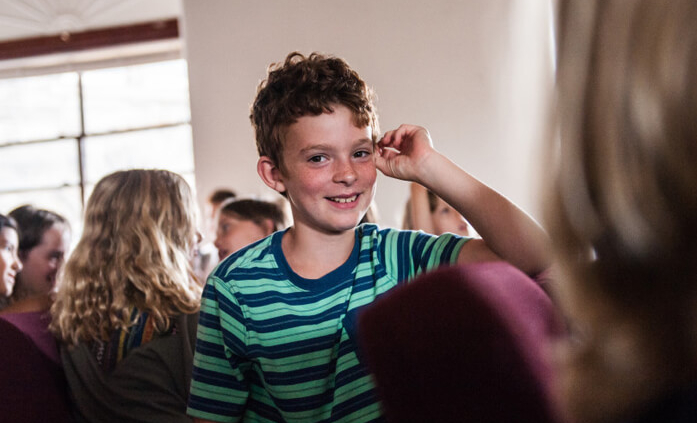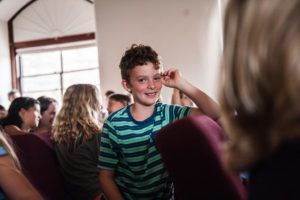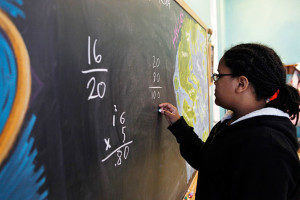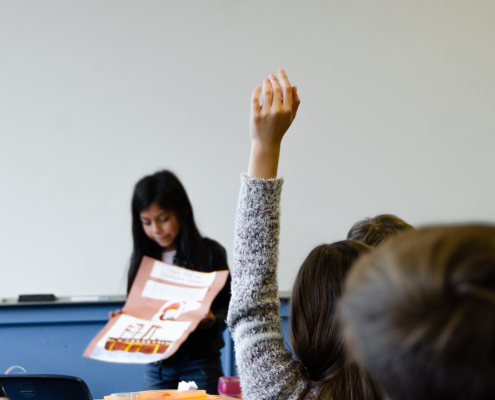Waldorf Education: Creating leaders in the 21st century
With our world changing exponentially before us, we must ask: What do children need to learn today in order to succeed in the future?
According to the U.S. Department of Labor, 65% of today’s grade school kids will be in jobs that don’t yet exist. How does an education system best teach children to succeed in phantom careers?
The agricultural world once needed healthy and strong leaders, the industrial world sought those with specific academic and trade skills. Now, in the face of an ever-evolving global scientific, business and political landscape, it is no longer about what to learn; it’s about learning how to learn. Most experts agree that we need future leaders who can learn within, and adapt to, ever-changing environments.
“It is no longer about what to learn; it’s about learning how to learn.”
One such expert is Claudio Fernández-Aráoz a global talent search executive and Harvard Business Review author. In his article, 21st Century Talent Spotting, Fernandez-Araoz, defines what he believes are the essential skills of tomorrow’s leaders – proper motivation, curiosity, insight, engagement and determination. Many others, like Michael Lai and Sir. Ken Robinson, add critical and creative thinking skills to this list. Robinson defines creativity as “the process of having original ideas that have value.” As Robinson says in his popular Ted Talk, Do Schools Kill Creativity?, “Intelligence is diverse, dynamic and distinct. We have to educate the whole being so that they can face a future we cannot see.
So how will schools teach children these 21st-century skills?
We know that there are some key problems with our current education system. It is in need of an overhaul to address the expanding and changing needs of a post-industrial, science-minded society. Change in systems, however, happens slowly. Can the state run education system adapt methodology quickly to benefit children in school today?
Waldorf Education, with its 100-year history, has a successful track record of innovative education practices that address and cultivate these essential skills.
Waldorf Education has a successful track record of innovative education practices that address and cultivate these essential skills. Here are examples of how Waldorf Educators foster critical and creative thinking, positive motivation and the curious engagement needed to ensure determination.
Critical Thinking –
There are many ways that Waldorf Education teaches critical thinking, but perhaps the most easily relatable example is a Waldorf teacher’s use the Socratic Method of inquiry. Waldorf teachers are encouraged to use this approach in all subjects, but do so specifically in science instruction. What would using the Socratic method look like in the classroom? Here’s one example.
During a science lesson, the teacher has each student attempt to lift a heavy item. The teacher then uses carabiners and rope to create a very simple pulley. The children lift the same object using the pulley system and the teacher asks them: What happened here? Who has an idea? The teacher can then lead the inquiries and debates between students. Then the teacher might have a few students add weight and increase the mechanical advantage of the pulley system. The follow-up questions would be: What do you notice now? How and why is this experience different? Then the teacher can guide additional inquiries into a deeper understanding of mechanical advantage and directional force.
Creative Thinking –
Art and art-instruction are pervasive in Waldorf Education. Waldorf is not an art school, however, it is an education philosophy that holds art and creativity in equal esteem with academics. Why? Because Waldorf educators understand that creativity and critical thinking are interrelated, and acumen in each, strengthen accomplishment in the other. This is evidenced by years of research — the connection of music training to higher verbal skills and cognitive function in math as two very small samples within a groundswell of research linking arts education to higher performance in academics
Motivation –
Fernandez-Araoz’s proper motivation is a complex quality to instill. One thing that does a particularly poor job of instilling proper motivation, however, is a results-oriented, failure-shaming system of academics. Students must learn to embrace challenge not run from it in fear of its consequence. Too often in a high-stakes testing environment, failure to answer correctly means a label of “failure in competence,” when in fact the opposite is true. Failure is actually the key element in learning challenging material. Children need to be removed from the negativity of associating intelligence with perfection and high test scores. Otherwise they can rarely develop or maintain a healthy motivation towards learning.
Curiosity and Engagement –
As the precursor to successful Socratic Inquiry, curiosity is key to learning. And the key to keeping children curious is keeping lessons relevant to their immediate experience. When a child asks, “Why do I have to learn math?” they are not looking to hear, “because you’re being tested or because you might have to use it in a job later.” They want to know why math is relevant right now.
Waldorf brings authentic immediacy to learning. Fractions matter because they will be used, that very day, in class to make bread. What happens when the fractions are wrong? The bread is not as tasty. This is the type of relevancy in learning that keeps children curious about the way in which the world works. Curious children are engaged children. In the example of a fraction lesson, no child will choose to stare out the window if offered a chance to measure flour. Keeping children actively present in the presently relevant lesson – with movement, art and inquiry – translates to continued and eager engagement.
Determination –
This quality is a result of all the others put together. A curious student who is engaged in a relevant lesson, and motivated by the right means, will see little value in quitting a task. Why would they? They do not fear failure. They are interested in the task at hand and they have reason to engage and find solutions. Working to foster all of the other skills creates a recipe for resilience.
Perhaps the cultivation of these skills inspired some of our nation’s most innovative executives to send their children to The Waldorf school in Silicon Valley. They realize what is slowly coming to the forefront in many parent’s minds – Waldorf Education has the potential already in place to create the kind of thinkers, artists and leaders the world needs for the 21st century.
You can read the original article here.










